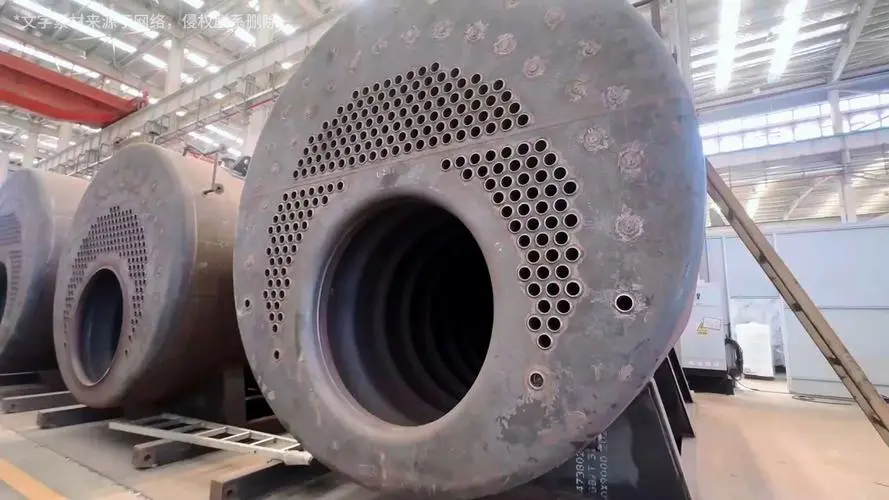
Nov . 04, 2024 15:54 Back to list
Schematic Diagram of a Hot Water Boiler System and Its Components
Understanding the Hot Water Boiler Schematic Diagram
Hot water boilers are essential components in various heating systems, playing a crucial role in providing comfort and efficiency to residential and commercial spaces. Understanding the schematic diagram of a hot water boiler can help users grasp how the system operates, diagnose issues, and ensure optimal performance. This article delves into the key elements of a hot water boiler schematic diagram, explaining its components and their functions.
At the core of the hot water boiler system is the boiler unit itself. The schematic diagram typically illustrates the boiler's inner workings, showcasing the heat generation process. In most designs, the boiler comprises a combustion chamber where fuel—such as natural gas, fuel oil, or biomass—is burned to produce heat. This heat is then transferred to the water circulating through the system. The schematic will highlight the burner, which is crucial for igniting the fuel and generating the necessary heat.
Adjacent to the combustion chamber, the heat exchanger plays a vital role in transferring heat from the combustion gases to the water. The schematic diagram may display a series of tubes or fins within the boiler, facilitating efficient heat transfer. Understanding this component is essential, as a malfunction in the heat exchanger can lead to reduced efficiency or even hazardous conditions.
Water circulation is another critical aspect depicted in the schematic. It typically involves a pump that circulates water throughout the system. The schematic will illustrate how water flows from the boiler to various heating elements, such as radiators or underfloor heating systems, before returning to the boiler for reheating. It’s important to note how the pump is often controlled by a thermostat, which regulates the temperature of the water according to user preference. This feedback loop ensures that the system operates efficiently and maintains a comfortable environment.
hot water boiler schematic diagram

Another component depicted in the schematic is the expansion tank. This tank is essential for accommodating the natural expansion of water as it heats up. The diagram will illustrate its placement in the system, usually positioned near the boiler. The expansion tank helps maintain pressure within the system, preventing potential damage due to excessive pressure build-up. Users should be aware of the importance of maintaining the proper water levels and pressure in the expansion tank to ensure safety and efficiency.
Safety features are also prominently displayed in hot water boiler schematic diagrams. These include pressure relief valves, which protect the system from overpressure situations, and temperature controls, which prevent overheating. Understanding these components is crucial for users to ensure that their boiler operates within safe limits, as failure to do so can lead to dangerous scenarios.
Additionally, the schematic may show control systems, such as programmable thermostats and control panels, which allow users to adjust settings remotely or set schedules for heating. Modern hot water boilers often incorporate advanced technologies that enhance efficiency, allowing for better energy management and lower utility bills.
Lastly, hot water boiler schematic diagrams often include piping systems, indicating entry and exit points for both the hot water and return lines. Users should familiarize themselves with these connections, as any leaks or blockages in these pipes can significantly affect the efficiency of the heating system. Proper insulation of these pipes is also crucial to minimize heat loss during the transfer process.
In conclusion, understanding the schematic diagram of a hot water boiler is vital for homeowners and facility managers alike. It provides insight into how the system operates, highlights the significance of each component, and emphasizes the importance of maintenance and safety. By being knowledgeable about their hot water boiler system, users can ensure efficient operation, troubleshoot potential issues, and ultimately enjoy the warmth and comfort that a well-functioning boiler provides. Regular maintenance and an understanding of the schematic can lead to prolonged equipment life and improved energy efficiency, making it a wise investment for any user.
-
High-Efficiency Commercial Oil Fired Steam Boiler for Industry
NewsJul.30,2025
-
High-Efficiency Biomass Fired Thermal Oil Boiler Solutions
NewsJul.30,2025
-
High Efficiency Gas Fired Thermal Oil Boiler for Industrial Heating
NewsJul.29,2025
-
High-Efficiency Gas Fired Hot Water Boiler for Sale – Reliable & Affordable
NewsJul.29,2025
-
High Efficiency Biomass Fired Hot Water Boiler for Industrial and Commercial Use
NewsJul.29,2025
-
High-Efficiency Biomass Fired Hot Water Boiler for Industrial Use
NewsJul.28,2025
Related PRODUCTS






















